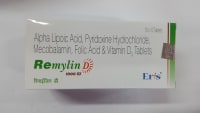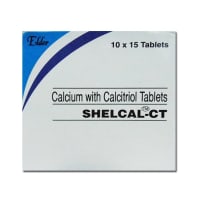NOTICE: unsafe with : Alcohol
USED FOR:
Osteoarthritis
Rheumatoid arthritis
Ankylosing spondylitis
COMPOSITION:
Piroxicam (20mg)
Therapeutic Uses:
pain analgesics

CAUTION
Taking Piroxicam with alcohol may increase your risk of stomach bleeding.

WEIGH RISKS VS BENEFITS
Flexar 20mg Tablet DT is unsafe to use during pregnancy.There is positive evidence of human fetal risk, but the benefits from use in pregnant women may be acceptable despite the risk, for example in life-threatening situations. Please consult your doctor.

SAFE
Flexar 20mg Tablet DT is safe to use during lactation. Human studies have shown that either the drug does not pass into the breastmilk in significant amount or is not expected to cause toxicity to the baby.

Flexar 20mg Tablet DT may make you feel dizzy, drowsy or affect your vision. Do not drive until your vision is clear.

Flexar 20mg Tablet DT should be used with caution in patients with severe kidney disease. Dose adjustment of Flexar 20mg Tablet DT may be needed. Please consult your doctor.No dose adjustment is recommended in patients with mild to moderate kidney disease. Regular monitoring of kidney function test is advised while you are taking this medicine.

CAUTION
Flexar 20mg Tablet DT should be used with caution in patients with liver disease. Dose adjustment of Flexar 20mg Tablet DT may be needed. Please consult your doctor.
Uses of Flexar Tablet DT
Flexar 20mg Tablet DT is used in osteoarthritis, rheumatoid arthritis, ankylosing spondylitis and gout.
How to use Flexar Tablet DT
Take this medicine in the dose and duration as advised by your doctor. Dissolve it in a glass of water before taking it. Flexar 20mg Tablet DT is to be taken with food.
How Flexar Tablet DT works
Flexar 20mg Tablet DT is a non-steroidal anti-inflammatory drug (NSAID). It works by blocking the release of certain chemical messengers that are responsible for inflammation (pain and swelling).
Common Abdominal pain, Constipation, Diarrhoea, Epigastric pain, Flatulence, Nausea, Vomiting, Indigestion.
Expert advice for Flexar Tablet DT
Inform your doctor if you have ever been diagnosed with kidney or liver problems. It should be taken with food or milk to avoid getting an upset stomach. It can cause serious complications like stomach bleeding and kidney problems if taken for a long time. Flexar can raise your risk of blood clots, heart attack, or a stroke. Inform your doctor if you are pregnant or planning to conceive or breastfeeding.
Q. What is the difference between Flexar and diclofenac?
Both Flexar and diclofenac are pain killers. However, piroxicam is a non-selective COX (cyclooxygenase - an enzyme responsible for inflammation and pain) inhibitor whereas diclofenac has a bit more selectivity to a COX-2 enzyme. This selectivity of diclofenac is supposed to decrease the side effects as compared to Flexar.
Q. What is the difference between Flexar and naproxen?
Both Flexar and naproxen are pain killers. Both are non-selective COX (cyclooxygenase - an enzyme responsible for inflammation and pain). Research studies have shown both are equally effective. However, gastric side effects are lesser with naproxen as compared to Flexar.
Q. What is the difference between Flexar and meloxicam?
Both Flexar and meloxicam are pain killers. Both are non-selective COX (cyclooxygenase - an enzyme responsible for inflammation and pain). Research studies have shown both are equally effective. However, acute gastric side effects are lesser with meloxicam as compared to Flexar.
Q. What is the difference between Flexar and ketoprofen?
Both Flexar and ketoprofen are pain killers. Both are non-selective COX (cyclooxygenase -an enzyme responsible for inflammation and pain). Research studies have shown ketoprofen topical gel is better and effective as compared to Flexar. Ketoprofen gel also showed excellent tolerability.
Q. What is the difference between Flexar and tramadol?
Flexar is a COX (cyclooxygenase -an enzyme responsible for inflammation and pain) whereas Tramadol is a narcotic-like painkiller. Tramadol is a habit forming medicine.
Q. What is the difference between Flexar and nimesulide?
Both Flexar and nimesulide are pain killers. However, Flexar is a non-selective COX (cyclooxygenase -an enzyme responsible for inflammation and pain) inhibitor whereas nimesulide is selective to the COX-2 enzyme. This selectivity of nimesulide is supposed to decrease the side effects as compared to piroxicam. It should not be used in children below 12 years of age.
Q. Can Flexar be used in the treatment of chikungunya?
Usually, the platelet count does not dip in cases of chikungunya and painkillers like piroxicam can lead to the risk of increased bleeding tendency. So refrain from taking Flexar or any painkiller in the case of any fever with joint pain. Consult your doctor before starting Flexar.
Q. Are Flexar and aspirin same?
No. Flexar and aspirin are not same. They belong to the same class of drugs known as COX (cyclooxygenase) inhibitors. They both are anti-inflammatory and analgesic.
Q. Can Flexar be used along with dexamethasone?
No. Flexar should not be used with dexamethasone. They both increase each other's toxicity. There is an increased risk of GI ulceration.
Q. Can Flexar be used with methocarbamol?
Yes. Methocarbamol can be used with Flexar as no serious side effects are known. Inform your doctor before starting any of the medication.
Q. Can Flexar be used along with paracetamol?
Yes. Paracetamol can be used with Flexar as no serious side effects are known. Inform your doctor before starting any of the medication.
Q. Is Flexar a NSAID?
Yes. Flexar is a non-steroidal anti-inflammatory drug (NSAID).
Q. Is Flexar a sulfa drug?
Flexar is a sulphur containing compound. Flexar can cause serious adverse events in sensitive individuals. It can cause severe skin reactions like Steven Johnson Syndrome. Do inform your doctor if you have any kind of allergies.
Q. Is Flexar a blood thinner?
No. Flexar is not a blood thinner. It is a pain killer. It should be avoided in a patient with a bleeding disorder.
Q. Is Flexar a muscle relaxant?
No. Flexar is not a muscle relaxant. It is a pain killer which acts on COX (cyclooxygenase -an enzyme responsible for inflammation and pain) enzyme.
Q. Is Flexar a narcotic?
No. Flexar is not a narcotic. It is a pain killer which acts on COX (cyclooxygenase -an enzyme responsible for inflammation and pain) enzyme to decrease the pain and inflammation.
Q. Can Flexar be used in hypertension?
No. Flexar is not a medication to control hypertension. It is important to note that Flexar decreases the effectiveness of the antihypertensive medication when given together. Inform your doctor if you are taking antihypertensive medications before starting Flexar.
Q. Can Flexar be used along with Losartan?
No. Flexar should not be combined with Losartan. It is important to note that Flexar decreases the effectiveness of the antihypertensive medication like losartan when given together leading to failure of antihypertensive therapy. Inform your doctor if you are taking antihypertensive medications before starting Flexar.
Q. Can Flexar be used with Lisinopril?
No. Flexar should be avoided with lisinopril. It is important to note that piroxicam decreases the effectiveness of the antihypertensive medication like lisinopril when given together leading to failure of antihypertensive therapy. Inform your doctor if you are taking antihypertensive medications before starting Flexar.
Q. Can Flexar be used with calcium channel blocker?
Yes. Flexar can be taken with calcium channel blocker. NSAIDs have been observed to reduce the effectiveness of all antihypertensive drugs except calcium channel blockers (ref: White 2007)
Q. Can Flexar be used with Tizanidine?
Yes, Flexar can be combined with tizanidine. Piroxicam is a pain killer and tizanidine is a skeletal muscle relaxant. It is used in the condition like a backache.
Q. Why is beta cyclodextrin added to Flexar?
Yes. Flexar can be combined with beta-cyclodextrin. Research has shown that combining Flexar with beta-cyclodextrin leads to faster onset of action of piroxicam and reduced gastric side effects.
Q. Are there any alternatives of Flexar?
Yes. There are alternatives to Flexar. Pain killers are prescribed according to the disease condition. Consult your doctor before starting piroxicam or changing it to other medication.
Q. What are the contraindications for Flexar?
Contraindications to piroxicam are an allergy, bleeding tendency, duodenal/gastric/peptic ulcer, stomatitis, Systemic Lupus Erythematosus (SLE), ulcerative colitis, upper GI disease, late pregnancy, cardiac disease, hepatic impairment, renal impairment.
Q. Can Flexar be used in the treatment of allergy?
No. Flexar is not a drug to treat allergy. It is a pain killer.
Q. How long does Flexar work?
Flexar is a long acting drug. Once the daily dose is enough for the relief of pain but it depends from person to person as the effectiveness of piroxicam increases when given for few weeks.
Q. Can you get high by using Flexar?
No. Flexar is not known to cause high. It is a non-narcotic painkiller.
Q. Can Flexar be used to treat menstrual cramp?
Flexar is not approved for the treatment of menstrual cramps. Research studies have shown that piroxicam is quite effective in significantly decreasing the menstrual cramps.
Q. Can I use Flexar for a migraine?
Flexar is not approved for the treatment of migraine. Research studies have shown that Flexar is effective in significantly decreasing the pain associated with migraine without aura.
Q. Is Flexar effective in back pain management?
Yes. It can be given for decreasing the back pain. However, you should consult your doctor for the exact cause of your back pain and then start the treatment. Do not self-medicate yourself with Flexar as the cause of back pain can be different for different person.
Q. Is Flexar affective in gout management?
Yes. Flexar can be given for the treatment of acute gout. Research studies have shown Flexar to be highly effective in the treatment of acute gout.
Q. Can you donate blood when on the medication with Flexar?
Yes. You can donate blood when on Flexar. Do inform your doctor before donating blood.
Q. Can I use Flexar if I am a diabetic?
Flexar in a diabetic patient can only be taken only by consulting a doctor because these medicines have the propensity to cause renal failure when taken for a long period. Diabetes itself causes renal Flexar so taking piroxicam can lead to increased risk of renal failure by many folds.
Q. Can I use Flexar if I have a deranged renal function?
No. Flexar should not be taken if you have a abnormal renal function because long-term administration of NSAIDs has resulted in renal papillary necrosis and another renal injury.
Q. Can Flexar lead to skin reactions?
Yes. Flexar is known to cause skin reactions which can be very severe such as exfoliative dermatitis, Stevens-Johnson Syndrome (SJS), and toxic epidermal necrolysis (TEN), which can be fatal. These serious events may occur without warning. You should inform your doctor if you feel you have a mild rash and immediately discontinue the drug.
Q. Can I use Flexar if I am pregnant?
No. Flexar should not be taken in pregnancy. It causes premature closure of the ductus arteriosus which can lead to fetal heart failure and death of the baby.
Q. Can I use Flexar if I have peptic ulcer disease?
No. Flexar is contraindicated in cases of active peptic ulcer disease. Flexar is known to cause gastric ulceration and bleeding.
Q. Can I use Flexar if I have asthma?
Some patients with asthma are hypersensitive to non-steroidal anti-inflammatory (NSAID) drugs like aspirin which can lead to acute attacks of asthma. Consult your doctor before starting this medication.
Q. Can Flexar lead to difficulty in conception?
Yes. Flexar can sometimes cause reversible infertility. Piroxicam by its mechanism of action may delay or prevent rupture of ovarian follicles, which has been associated with reversible infertility in some women. Consult your doctor before starting this medication.
Q. Can Flexar be used with diuretics?
No. Flexar should not be used with diuretics. Flexar reduces the natriuretic effect of furosemide and thiazides diuretics in some patients. This response has been attributed to inhibition of renal prostaglandin synthesis.
Q. Can Flexar be used with lithium?
No. Flexar should not be used with lithium. Flexar leads to an elevation of plasma lithium levels and a reduction in renal lithium clearance. This is because of inhibition of renal prostaglandin synthesis by the NSAID. Consult and inform your doctor before starting this medication.
Q. Can Flexar be used with warfarin?
No. Flexar should be avoided with warfarin as they both lead to increase in bleeding tendencies. Inform your doctor if you are taking any of the medications. If given together then the therapy should be monitored closely.
Q. What increases the chances of getting a gastric ulcer when I am already taking Flexar?
The chances of gastric ulceration increases if you take medicines like corticosteroids and anticoagulants. Long term use, alcohol, smoking and old age are few other factors which can increase the chances of ulceration.
Q. Who should not take a Non-Steroidal Anti-Inflammatory Drug (NSAID)/ Flexar?
Patients who had an asthma attack, hives, or other allergic reaction with aspirin or any other NSAID medicine or for pain right before or after heart bypass surgery.
Q. What are the serious side effects of Flexar?
GI discomfort and, rarely, serious GI side effects, such as ulcers and bleeding, serious skin side effects such as exfoliative, Stevens-Johnson Syndrome (SJS), and toxic epidermal necrolysis, liver failure, renal damage.


 Flexar 20mg Tablet DT
Flexar 20mg Tablet DT  Bookmark
Bookmark





















